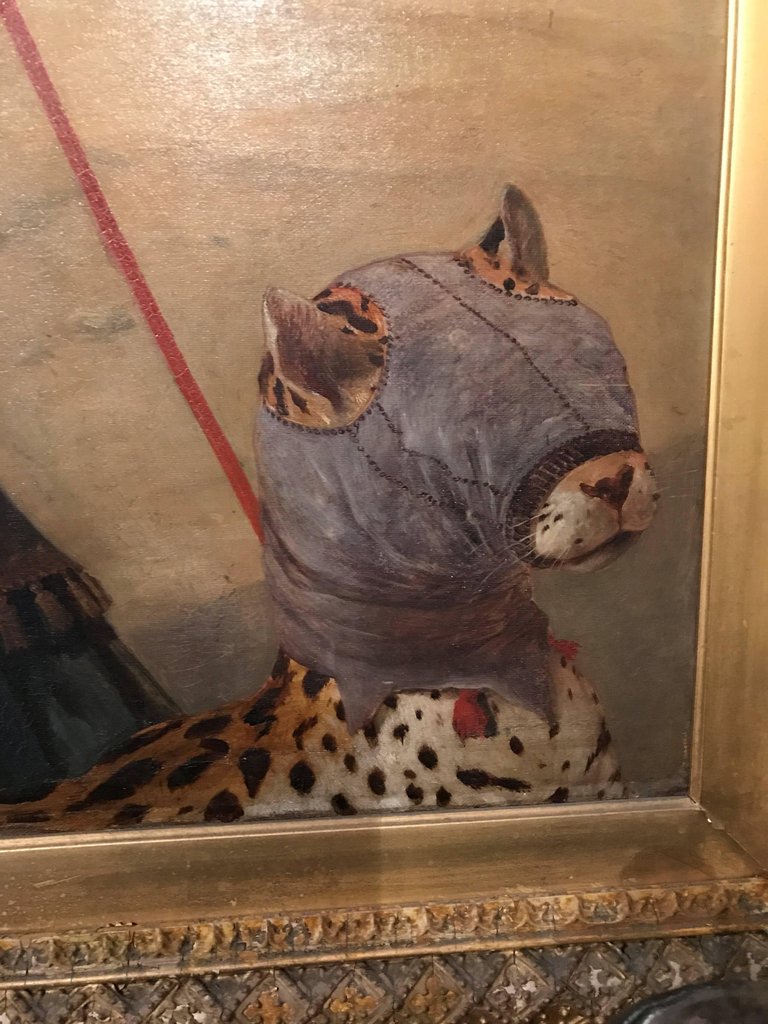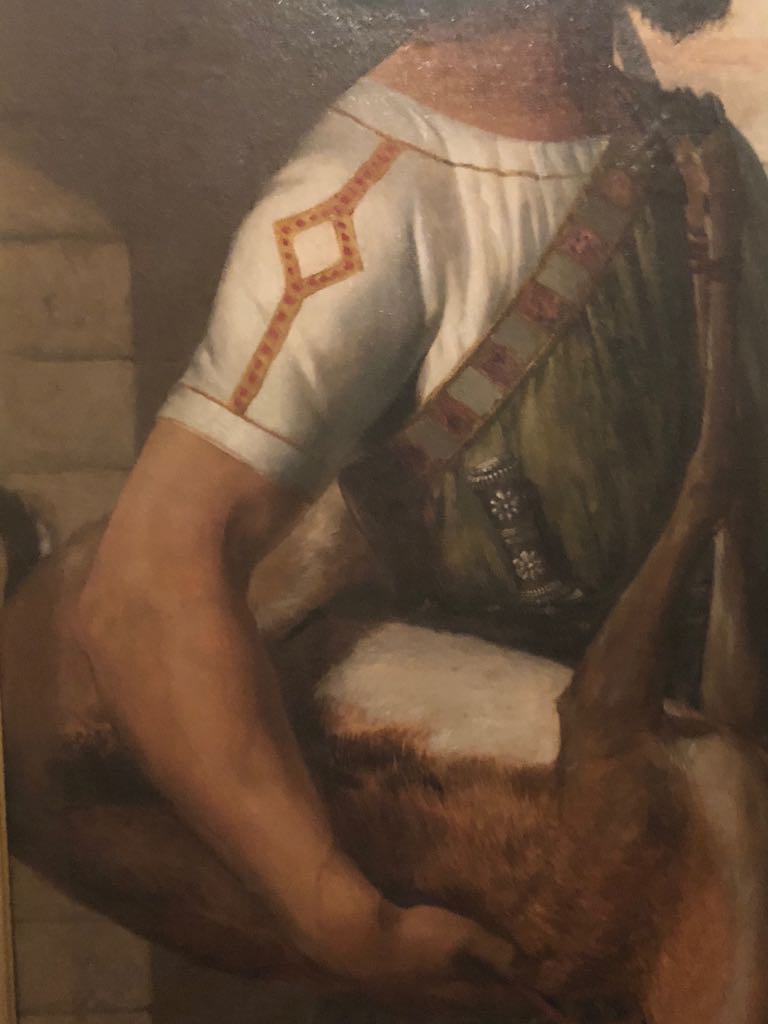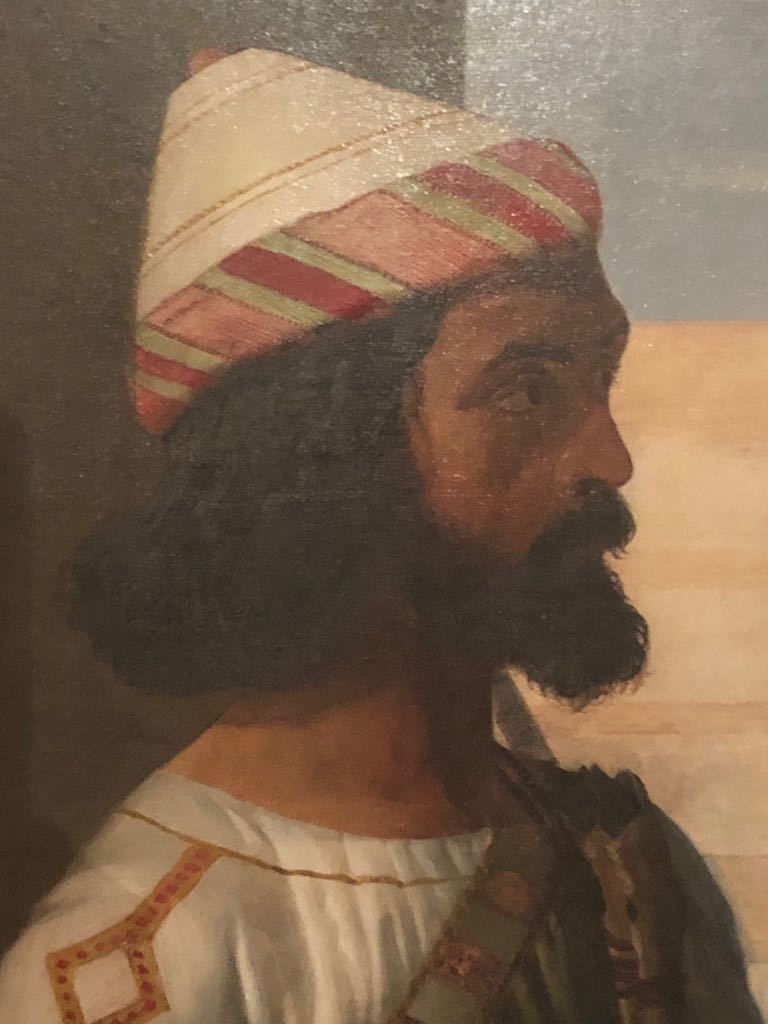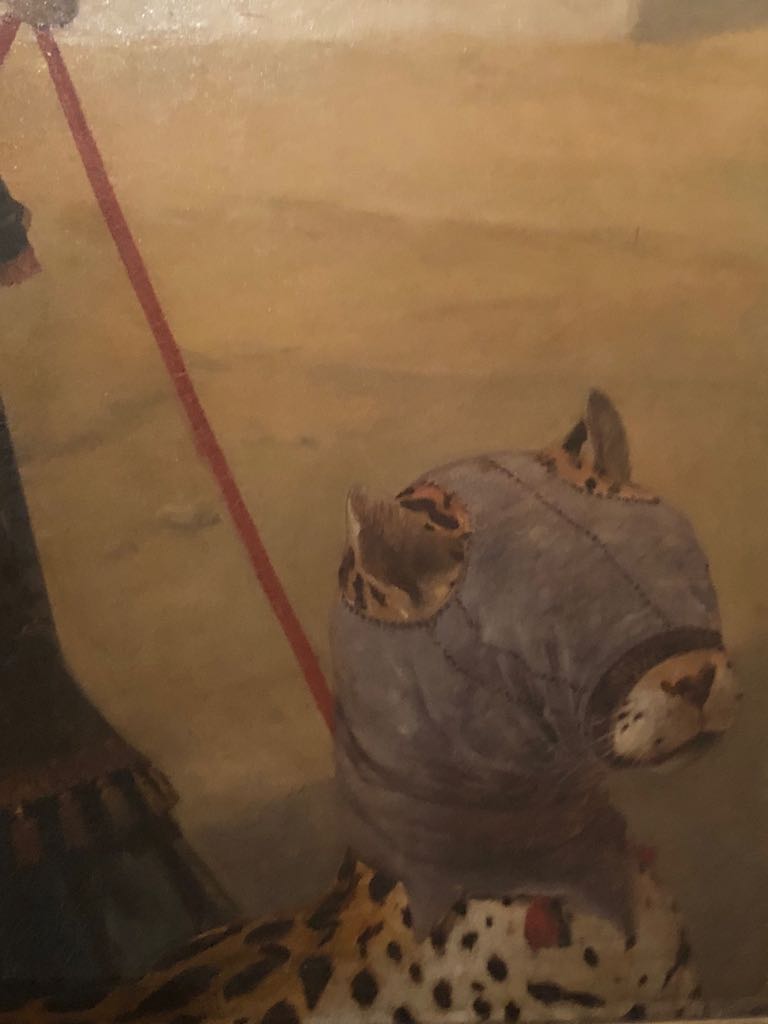John Rogers HERBERT TA, HRI (1810-1890)
The Hunting Cheetah
signed, inscribed and dated ‘J.R. Herbert R.A./Paris 1853’ (lower left)
oil on canvas
in the original frame
37 ¼ x 28 inches;
47 1/4 x 38 inches, inc. frame
Price: Price on Application
Provenance:
Thomas Agndew & Sons
Sir Edward Bates, Gyrn Castle, North Wales
This striking portrait shows a Babylonian nobleman returning from a hunting expedition with his cheetah and its catch - a gazelle - which, from its distinctly curved horns and dark body stripe, can be identified as a Thomson’s Gazelle. The painting is important in a historical context as it dates from the time when archaeological findings, and their dissemination around the Western world, ensured that public fascination with Mesopotamia reached its height.
Herbert was a painter of portraits, historical genre and landscapes. His early work showed a preponderance of subjects derived from Italian history, following his visit to that country in 1836. These early compositions tend to be characterized by high drama and contraposto figurative groups, such as Pirates of Istria carrying off the Brides of Venice (1839). However, during the 1830s he made contact with the Nazarenes, a German group of painters who cultivated a sharp-edged, flat style. Herbert’s aesthetic became more Nazarence in tendency (with its juxtaposition of decorative surfaces, The Hunting Cheetah, dated 1853, demonstrates the longevity of their influence). 1840 proved a seminal year for Herbert personally as he converted to Catholicism, much as a result of his friendship with the architect and man of letters Augustus Welby Pugin (1810-1852). It was Pugin who created the magnificent frame in which The Hunting Cheetah is presented. In the ensuing decades, Herbert concentrated on religious subjects and submitted Pope Gregory Teaching the Boys to Sing (1846) as his Royal Academy diploma work. The same year he was one of the selections of artists chosen to decorate the interior of the New Palace of Westminster, and his contributions included nine Old Testament scenes on the theme of Human Justice.
The Hunting Cheetah derives from a more exotic strand of Herbert’s art inspired by the Old Testament context and contemporary archaeological digs. Herbert is forward thinking in his artistic appropriation of their genus. Edwin Long was the most famous artist to interpret and integrate artifacts into his scrupulously researched Eastern subjects: The Babylonian Marriage Market, painted two decades later (1875) exploited the decorative qualities of the mythologized state to the full, showing the prospective brides lined up against an interior decorated with mosaics and ornate drapery.
Herbert’s subject, seen in dramatic profile, with his dark beard and cleverly defined musculature, resembles the left-hand figure in John the Baptist Reprimanding Herod (1848). The composition also features the same staggered perspective, with columns dividing the foreground and a chink of distance revealed beyond.
Babylon, among with Nineveh, Nimrud and Borsippa, was one of the ancient cities unearthed in excavations which began mid-century. The most feted of the archaeologist pioneers was Austen Henry Layard (1817-1894) who began work at the ancient city of Kalhu in 1845 where he unearthed the palace of Assurnasirpal II (883-859 BC), and subsequently dug at the site of Nineveh from 1847. Layard negotiated the transferral of Assyrian wall-sculpture and colossi to the British Museum, initiating a slow but mounting tide of public interest. Layard published two volumes dedicated to the Monuments of Nineveh (1849-53) and a more substantial set chronicling Nineveh and its Remains (1849), which became a bestseller. A five-shilling edition was produced to cater for public demand.
Herbert may well have studied these books; at the very least he would have been aware of the monumental findings, the quality of Assyrian art, and the nature of its unique design aesthetic, as evinced in the imported treasures. The fever of interest transcended the arts: Sardanapalus, King of Assyria, a play based on Byron’s poem of 1821, was performed in June 1853 with Charles Kean in the lead role. The set designers visited the British Museum where they made detailed studies before starting work. In 1854 the most ambitious set design of all, ‘Nineveh Court’, was to become one of the most spectacular attractions at the Crystal Palace exhibition mounted at Sydenham. Herbert’s painting is a superb record of this phenomenon: a visual testament to the interest which Mesopotamia inspired.





